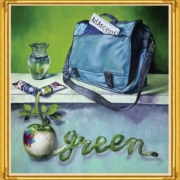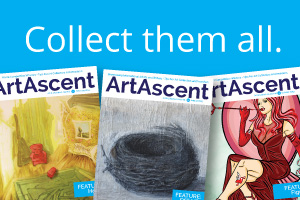How to minimize risk by purchasing art wisely
In bygone days it was common for investors to frame, matt and hang, as cautionary mementos, valueless stock certificates from bankrupt companies. Turning these into art-like interior adornments was a way of bravely facing up to one’s folly. For an investor in art an equivalent might be a wall of fakes and forgeries and otherwise valueless artworks. Avoiding such a wall of shame is not easy for the collector. Even the most skilled make mistakes.
Gazing into a crystal ball is not the best way to predict whether a work of contemporary art will increase in value over time. Chance plays a role in the monetary appreciation of art to be sure, but there are ways to increase the probability of capital gain in art investing. The most important of these is to acquire your work from a dealer with a good reputation. How do you evaluate this?
The business of dealing in art depends on commission sales. Like all good entrepreneurs, art dealers or gallery owners want to complete as many sales as possible. The most successful dealers assemble a stable of artists whose works they consider saleable in the specific market they have chosen. This might be local, novice art collectors, interior decorators or experienced high-end consumers.
Before buying a work of art it is advisable to consider the vendor’s business. Try to get as much information as possible about the stable of artists and their sales. Go to an opening at a commercial gallery and look for the red dots indicating that a work has been sold. Look carefully at the price list. Return to the gallery at the end of the show. Look again for the red dots. This will tell you a lot about the gallery and the market for works of individual artists. Although it is far from invariably true, it is more likely that art that finds a market today will have a market in the future.
An art dealer or gallery owner will allocate a percentage of their commissions to advertising and promotion. An indication of the success of an art dealer and what they consider to be the potential for sales of the work of a specific artist is the amount and quality of publicity and promotion allocated to an individual artist.
Buying a work of art from a dealer or gallery rather than directly from an artist has significant advantages for the collector. Such a work of art has the dealer’s stamp of approval. A dealer, if in business for a long time, will have developed an eye for quality and a nose for commercial success. The degree of a dealer’s commitment to an artist’s works is an indication of what might happen in future years with respect to the value of the work of art you buy. It is no guarantee, just an indication.
Another way to reduce the risk of investing in art is to educate yourself by regularly attending public auctions. Note what sells and what is bought in or unsold. Note what works in the catalogue have a provenance that stretches back to specific commercial galleries. Where a work of art was bought by a collector often has a significant effect on the knock down price. Again – although it is not a hard-and-fast rule – what sells today will sell in the future. What works against this rule is change in taste.
The apparent fickleness of taste is one of those pesky unknowns that confounds every investor in art. Some kinds of art or styles of art have cyclical popularity among collectors and the public. Like fashions in clothing, there are periodic revivals of earlier styles. A revival of a style, technique or medium among contemporary artists has the consequence of increasing the value of similar works created by previous generations of artists. Predicting future taste is extremely difficult; however, the rewards for collectors in getting it right can be significant.
In 1839, when photography was in its infancy, the French painter Paul Delaroche said “from today painting is dead.” Of course he was wrong. If a collector at the time stopped buying French academic painting they missed an opportunity. When mid-20th century critics, collectors and art historians – blinded by their infatuation with modernism – turned up their noses at 19th century academic art, prices for it plummeted. For those who could anticipate a change in taste, this was a great opportunity to buy. It is not unheard of for high-quality French academic paintings, which could be had for a song in the 1950s, to sell today for well over a million dollars. The current revival of taste is connected to a re-evaluation of 19th century academic art and a movement contesting the tyranny of modernism by contemporary artists.
Collectors who consult a crystal ball before making acquisitions are doing themselves a disservice. There are much more reliable ways to determine the likelihood of success in investing in art.
By Dr. Alan McNairn







